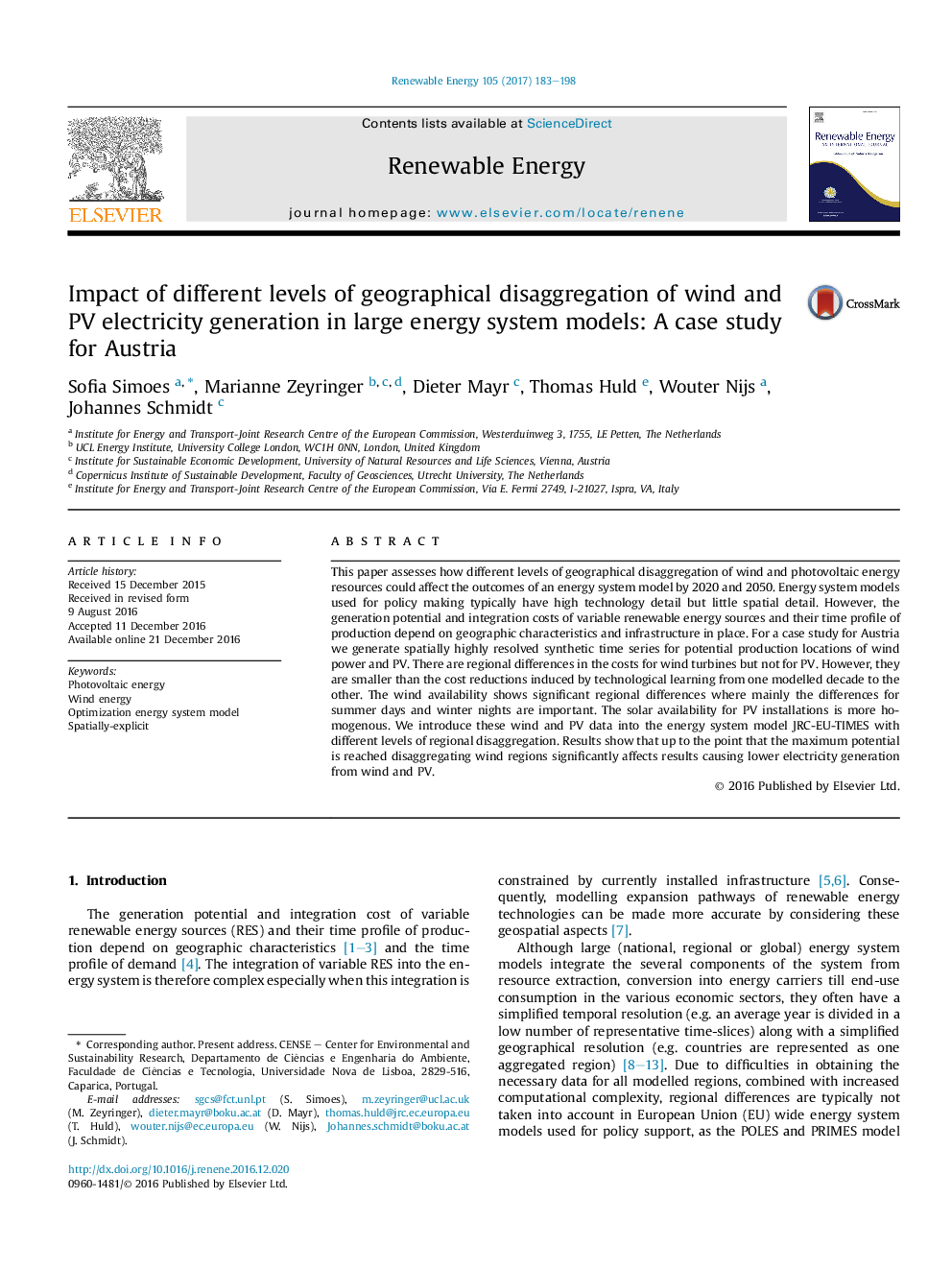| Article ID | Journal | Published Year | Pages | File Type |
|---|---|---|---|---|
| 4926429 | Renewable Energy | 2017 | 16 Pages |
Abstract
This paper assesses how different levels of geographical disaggregation of wind and photovoltaic energy resources could affect the outcomes of an energy system model by 2020 and 2050. Energy system models used for policy making typically have high technology detail but little spatial detail. However, the generation potential and integration costs of variable renewable energy sources and their time profile of production depend on geographic characteristics and infrastructure in place. For a case study for Austria we generate spatially highly resolved synthetic time series for potential production locations of wind power and PV. There are regional differences in the costs for wind turbines but not for PV. However, they are smaller than the cost reductions induced by technological learning from one modelled decade to the other. The wind availability shows significant regional differences where mainly the differences for summer days and winter nights are important. The solar availability for PV installations is more homogenous. We introduce these wind and PV data into the energy system model JRC-EU-TIMES with different levels of regional disaggregation. Results show that up to the point that the maximum potential is reached disaggregating wind regions significantly affects results causing lower electricity generation from wind and PV.
Related Topics
Physical Sciences and Engineering
Energy
Renewable Energy, Sustainability and the Environment
Authors
Sofia Simoes, Marianne Zeyringer, Dieter Mayr, Thomas Huld, Wouter Nijs, Johannes Schmidt,
